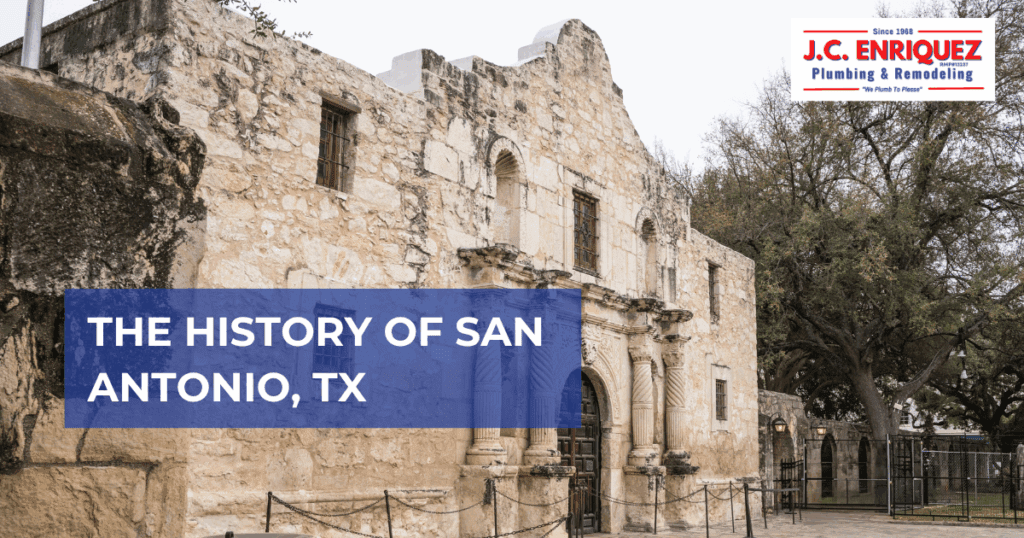San Antonio, Texas, isn’t just a city; it’s a living storybook with pages that stretch back over 300 years. Located in South-Central Texas, this historic city was first shaped by the Indigenous Payaya people who lived along the life-giving San Antonio River. Later, Spanish explorers established missions and military posts here, laying the foundation for what would become one of the most iconic cities in the United States.
Known today for the Alamo, the River Walk, colorful festivals, and warm hospitality, San Antonio blends old-world charm with modern-day excitement. Every part of the city, from its colonial missions to the vibrant markets, is tied to a deep and fascinating past. Whether you are a local or just visiting, understanding San Antonio’s journey helps you appreciate the soul of this vibrant place.
While we know of the city’s beautiful present, let’s also have a look at the glorious history of San Antonio, TX.
1. Before the Spanish Arrived in San Antonio, TX
Long before any European flags flew here, the native nations thrived along the clear waters of the San Antonio River. The Payaya people built villages beside shady pecan and cypress trees and traded with other groups. Archaeologists have found tools that show humans lived nearby for thousands of years.
2. Spain Plants New Roots in San Antonio, TX (1718)
In 1718, Spanish soldiers and missionaries founded Mission San Antonio de Valero (later called the Alamo) and the town of Villa de Béxar. The mission system soon grew to five churches that taught farming, trades, and the Catholic faith to Indigenous families. Today, you can still see these limestone walls at the UNESCO-listed San Antonio Missions.
3. Mexico, Independence, and the Famous Alamo (1821-1836)
When Mexico won freedom from Spain in 1821, San Antonio became a Mexican frontier town. But another fight was coming. About 200 defenders held the Alamo for 13 days during the Texas Revolution in 1836. Their stand became a rallying cry: “Remember the Alamo!” that pushed Texas toward independence.
4. A Growing U.S. City (1845-1899)
Texas joined the United States in 1845, and San Antonio soon buzzed with cattle drives, stagecoaches, and new railroads. By the late 1800s, streetcars ran down Houston Street, and fresh-water canals made downtown cooler in the summer heat. Immigrants from Germany, Mexico, and the American South mixed their music and cooking here, forming the city’s famous blend of cultures.
5. Military Muscle and Modern Change (1900-1999)
The 20th century brought military bases like Fort Sam Houston and Kelly Field, which trained thousands of soldiers and pilots. After World War II, suburbs spread, highways looped the city, and the 1968 HemisFair introduced the 750-foot Tower of the Americas. In 1992, San Antonio adopted its blue-and-red flag with the Alamo star in the middle.
6. San Antonio, Texas: A City of Culture & World Heritage
Today, San Antonio is Texas’s second-largest city, drawing millions to the shaded River Walk, Fiesta parades, and Spurs basketball games. In 2015, the five Spanish missions were named Texas’s first UNESCO World Heritage Site, honoring their Spanish and Indigenous design blend. A new World Heritage Center now tells those stories with 3-D screens and local art.
7. Ties Across the San Antonio Metro
San Antonio’s story also lives in its neighboring communities—Mico, Windcrest, Live Oak, Converse, Schertz, Cibolo, Helotes, and Castroville. Each town adds its festivals, parks, and flavors, yet all share the Alamo City’s history through jobs, schools, and family ties. Whether you’re tubing in Castroville’s Medina River or shopping in Cibolo, you are part of the greater San Antonio Metro.
RJC Enriquez Plumbing: Proud to Serve San Antonio, Texas
Need a trusted plumber in San Antonio? JC Enriquez Plumbing has kept San Antonio homes comfortable for years. From leaky faucets downtown to water-heater installs in Mico, Windcrest, Live Oak, Converse, Schertz, Cibolo, Helotes, and Castroville, our licensed team arrives on time with friendly prices. We treat every customer like a neighbor—because they are!
Quick FAQs About San Antonio’s History
1. Why is the city called San Antonio?
Spanish explorers named the river and area on June 13, 1691, the feast day of Saint Anthony of Padua.
2. What makes the Alamo so famous?
It was the site of a key 1836 battle during the Texas Revolution, where Texan defenders fought for independence from Mexico.
3. How many Spanish missions can I visit in San Antonio?
You can visit five Spanish Missions in San Antonio: the Alamo, Concepción, San José, San Juan, and Espada. All are part of a National Historical Park and World Heritage Site.
4. What year did San Antonio join the United States?
San Antonio joined the United States in 1845, when Texas became the 28th U.S. state.
5. Where can I learn more about San Antonio in person?
You can start at the Alamo Visitor Center downtown, then follow the Mission Trail or stop by the new World Heritage Center on the South Side.

